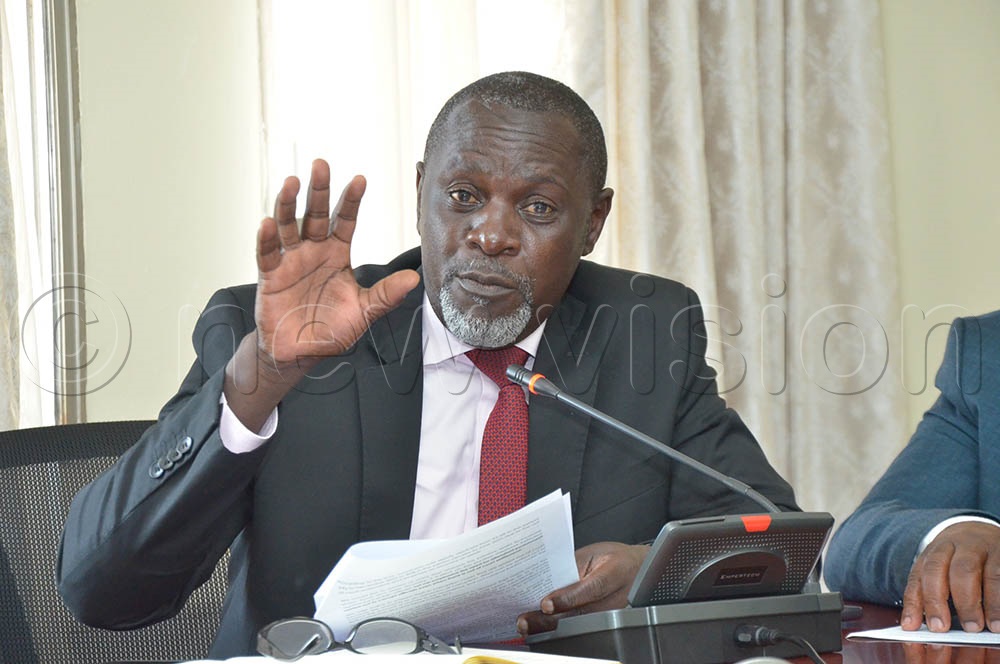MPs want sh160b for electricity in industrial parks
Feb 16, 2024
The authority supports three private industrial parks including Liao Shen in Kapeeka (Nakeseke), MMP in Buikwe district, and Tian Tang in Mukono district.

Abed Bwanika, Committee on government assurance and Implementation chairperson. (File Photo)

John Odyek
Journalist @New Vision
____________________
Parliament’s Committee on government assurance and Implementation has asked the finance ministry to allocate a subsidy of shillings 160.34 billion to the energy ministry to support direct electricity connections to industrial parks.
This is in line with a presidential directive of June 4, 2022, to set the cost of electricity for manufacturers at US cents 5 per unit from hydropower stations.
The recommendation is contained in a report of the committee presented to the plenary on Thursday, February 15, 2024. The committee monitored and evaluated the status of implementing the presidential directive.
While presenting the report, committee chairperson Abed Bwanika said two private industrial parks in Kapeeka and Buikwe were piloted to enable monitoring and evaluation of the impact of low tariff incomes on the productivity of the industries.
Bwanika noted that a visit to the two public industrial parks in Mbale and Soroti, out of the eight public industrial parks operated by the Uganda Investment Authority (UIA) indicated that they were receiving insufficient electricity or facing high costs of accessing electricity.
“Implementation of the US cents 5 per unit by the energy ministry did not foster the spirit of fair competition because it benefitted only privately operated industrial parks. We recommend allocation of sh160.34b to cater for full implementation of the Presidential directive in all industrial parks,” Bwanika said.
The committee observed that the execution of the presidential directive under the pilot extension of electricity to two industrial parks did not have supporting regulations in place as required by the Electricity Amendment Act, 2022.
“The Ministry of energy should table before Parliament within one month, proof of the regulations prescribing the terms under which industrial consumers may purchase electricity directly from generation or transmission companies,” Bwanika said.
The ministry was also tasked to present a clear roadmap on how the Government intends to extend electricity to industrial parks, directly from power generation plants.
Currently, UIA operates eight public industrial and business parks including Namanve, Luzira, Bweyogerere, Jinja, Soroti, Mbale, Kasese, and Mbarara Small and Medium Enterprise Park.
The authority supports three private industrial parks including Liao Shen in Kapeeka (Nakeseke), MMP in Buikwe district, and Tian Tang in Mukono district.
Under the directive, the industrial parks should get power directly from the Government-operating hydropower stations of Karuma, Isimba, Nalubaale, and Kiira without going through the Umeme distribution network.
Uganda's power generation capacity of about 1,402mw will increase to 2,000mw with the planned commissioning of the 600mw Karuma Hydropower Plant based in Kiryandongo district launched. Uganda’s access to the national electricity grid stands at 19% and off-grid connections mainly solar power connections stand at 38%. The current national level of electricity connectivity access stands at 57%.
Eng. Ziria Tibalwa Waako, the chief executive officer (CEO) of the Electricity Regulatory Authority, in a separate event, said the cost of electricity and the issue of affordability was keeping the regulators awake.
Waako explained that bill affordability is challenging because the country is in a period involving investing in capital-intensive assets with over $2b (about shillings 7.6 trillion) being injected. Waako said the large dams have been built on loans. There are outstanding costs required to recover the loans.
She notes that from the Nalubale and Kira power stations electricity is being sold at under two US cents per kilowatt-hour (kWh). While for Karuma will cost 4.8 US cents per kWh and Isimba Power Project 5 US cents per kWh because of the loans. But the costs are expected to fall to 2 US cents per kWh over time.
Uganda’s Energy Transition Plan seeks a surge in renewable energy production, aiming to increase capacity to 52,000MW by 2040 and achieve universal access to electricity by 2030.

No Comment